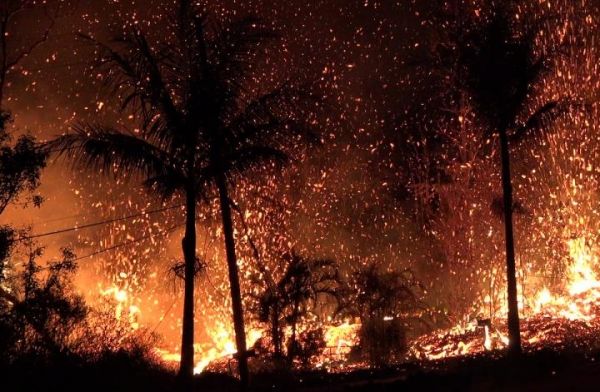The unprecedented cost of the 2018 Kīlauea eruption in Hawai‘i reflects the intersection of distinct physical and social phenomena: infrequent, highly destructive eruptions, and atypically high population growth, according to a new study published in Nature Communications and led by University of Hawai‘i at Mānoa researchers.
It has long been recognized that areas in Puna, Hawai‘i, are at high risk from lava flows. This ensured that land values were lower in Puna—which lies within the three highest risk lava hazard zones 1, 2 and 3—which actively promoted rapid population growth.
“Low prices on beautiful land and a scarcity of recent eruptions led to unavoidable consequences—more people and more development,” said Bruce Houghton, the lead author of the study and Gordan Macdonald Professor of Volcanology in the UH Mānoa School of Ocean and Earth Science and Technology (SOEST). “Ultimately this drastically increased the value of what was at risk in 2018, relative to earlier eruptions of Kīlauea.”
Read more at: University of Hawaii at Manoa
Fissure 8 erupts in lava hazard zone 1, back-lighting a front gate, a mailbox and utility lines. May 5, 2018. (Photo Credit: Bruce Houghton)


